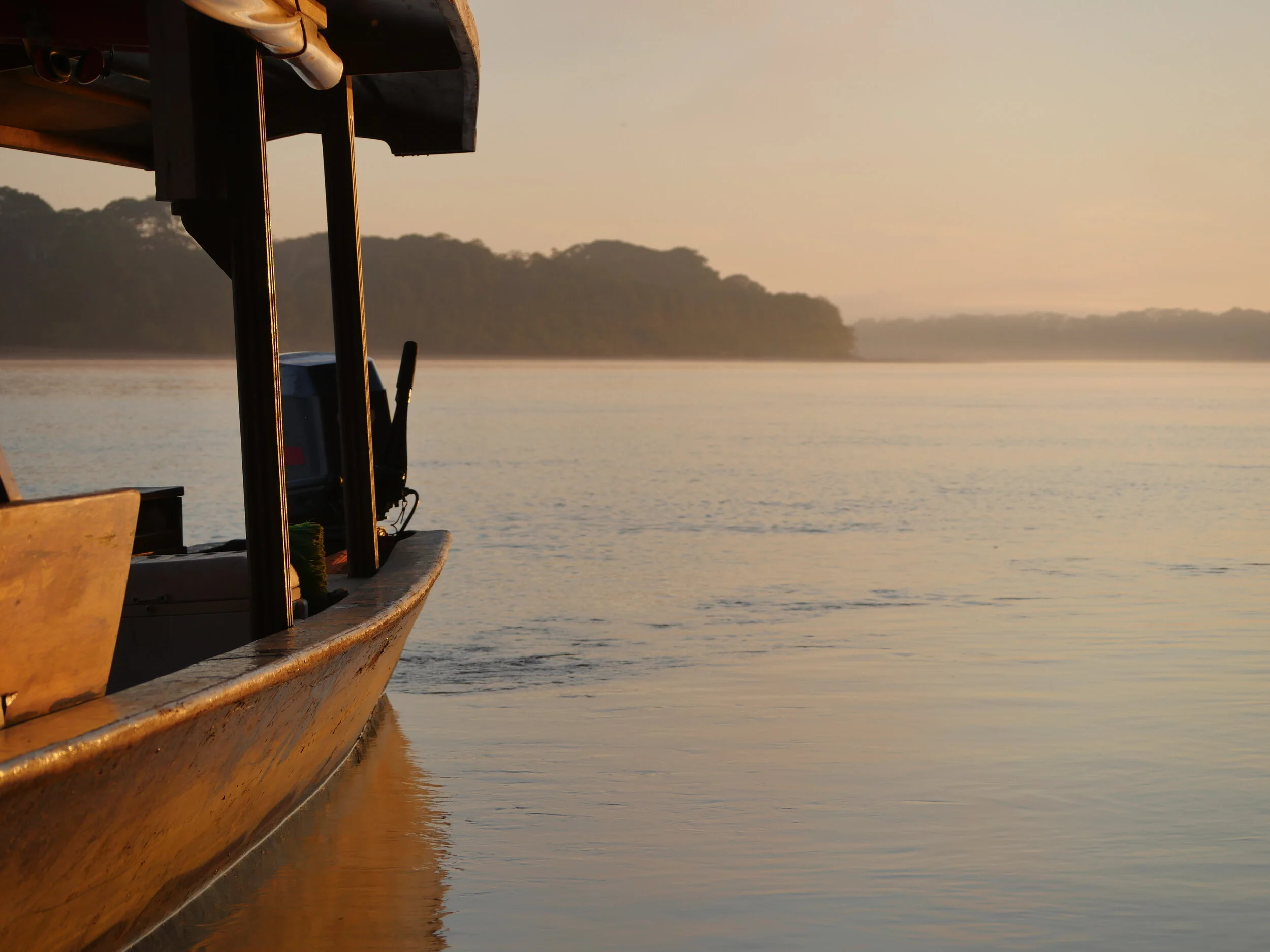Surya Namaskar
India, Varanasi, sunrise over the sacred Ganges river, 2005
Surya Namaskar or the Sun Salutation, is one of the best known yogic practices. The sequence consists of twelve gracefully linked asanas.
India, Varanasi, gathas in the morning sun, 2005
The set of poses is dedicated to the Hindu God of the Sun - Surya. The Sun is a primary source of light. Therefore from the symbolic point of view, the Sun is identified with consciousness. It's also perceived as the spiritual heart of our world. No wonder that the Sun Salutation sequence begins and ends with a jointed-hands gesture at the level of the heart, the seat of wisdom at the individual level. The Sanskrit word namaskar means "to bow to" or "to adore".
Historically speaking, the origins of the sequence is controversial. However old Sun Salutation is, and whatever it may initially have looked like, it changed over the years. The unquestionable advantages, the practice offers, stay the same, which is preparation for the other asanas and initiation of conscious connection of breath and movement of the body.
India, Sun Salutation at Delhi Airport
As I know Surya Namaskar, each position has its proper physiological effects and is counterpose of the previous one. This Classical Sun Salutation is an excellent way to start the practice and consists of:
Tadasana (Mountain Pose) - rooting, alignment
Urdhva Hastasana (Upward Salute) - lengthening, spinal integrity
Uttanasana (Standing Forward Bend Pose) - calming property
Anjaneyasana (Low Lunge) - elongation awakening
Phalakasana (Plank) - strengthening
Astanga Pranam (Knees, chest, chin)
Bhujangasana modified ("Easy Cobra" version) - spinal extension
Adho Mukha Svanasana (Downward-Facing Dog Pose) - strengthening and lengthening of the entire body
Anjaneyasana (Low Lunch)
Uttanasana (Standing Forward Bend Pose)
Urdhva Hastasana (Upward Salute)
Tadasana (Mountain Pose)
The practice of the sequence brings many benefits. It is invigorating, improves the elasticity of the body and strength of the muscles, activates the nervous system and settles the mind. Each step of Surya Namaskar has its mantra:
Om Mitraya Namaha (Salutations to the Friend of all)
Om Ravaye Namaha (Salutations to the Shining One)
Om Suryaya Namaha (Salutations to the One who induces activity)
Om Bhanave Namaha (Salutations to the One who illuminates)
Om Khagaya Namaha (Salutations to the One who moves through the sky)
Om Pushne Namaha (Salutations to the Giver of Strength)
Om Hiranyagarbhaya Namaha (Salutations to the golden cosmic Self)
Om Marichaye Namaha (Salutations to the Giver of light)
Om Adityaya Namaha (Salutations to the son of Aditi, the cosmic Mother)
Om Savitre Namaha (Salutations to the Lord of Creation)
Om Arkaya Namaha (Salutations to the One who deserves praise and glory)
Om Bhaskaraya Namaha (Salutations to the One who leads to enlightenment).
There are many versions of Sun Salutation. Some authors describe twenty-five different ones. Surya Namaskar A, for example, is more challenging as it introduces new elements: Chaturanga Dandasana (Four-Limbed Staff Pose), Urdhva Mukha Svanasana (Upward-Facing Dog Pose). Whereas Surya Namaskar B, aimed at experienced practitioners, additionally complements the sequence with Utkatasana (Chair Pose) and Virabhadrasana I (Warrior I Pose). Within all those forms, there are many variations and modifications, depending on the abilities, special needs and conditions.
Undoubtfully Surya Namaskar energizes the body. However, it's the joy that comes from the regular practice, when the fluidity of movements is coordinated with the breath, that I price the most.
Peru, sunrise over Madre de Dios River (Amazon tributary), 2019




